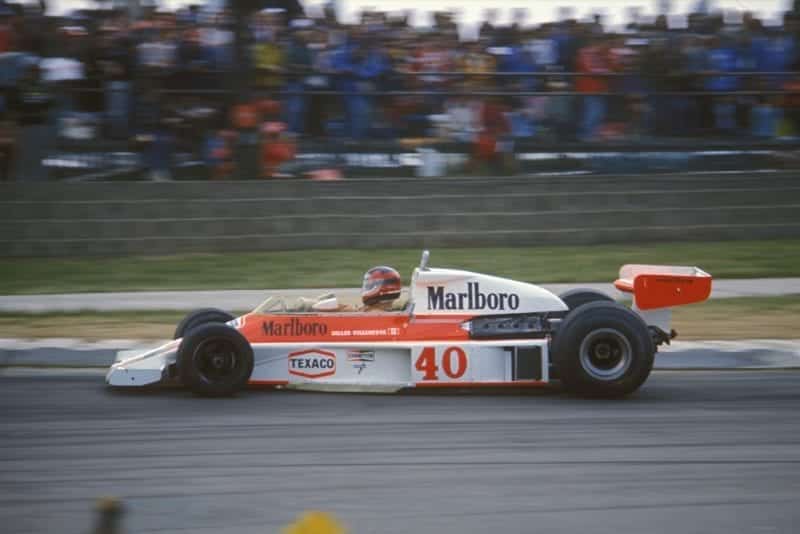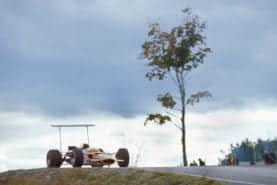Hunt was seriously impressed and suggested to Teddy Mayer, his team boss at McLaren, that they should take a serious look at this funny little guy from rural Canada.
It was hardly the accepted route to F1 – a season in regional Formula Ford followed by three more in a national Formula Atlantic series that was somewhat of a backwater in terms of international recognition.
But Villeneuve’s form and style made him stand out. At the beginning of ’77 he took up where he left off in Atlantic, and also took up an offer to replace the retiring Chris Amon in the Wolf Can-Am car, with Amon staying on as team manager.
The Kiwi became just as big a fan as Hunt. “He’s one of the fastest drivers I have ever seen,” said the F1 veteran of 14 years. “I’ve only seen one driver in the world who had the car control Villeneuve has, a guy who always knew where he was in the car no matter what. That was Jimmy Clark.” This all about a guy who’d not even driven F1 or even ventured out of north America yet.
After consulting with Marlboro’s John Hogan – who had also been campaigned by Hunt – Teddy Mayer entered a McLaren M23 for Villeneuve at Silverstone, in addition to the team’s regular M26 models for Hunt and Jochen Mass.
This entailed a general test session in the week before the race together with taking part in pre-qualifying on the Thursday. That’s all the opportunity Villeneuve had learn about both F1 and the circuit, one of F1’s fastest of the time. Villeneuve’s driving in that test session has become a thing of legend as he repeatedly and spectacularly spun the car.




